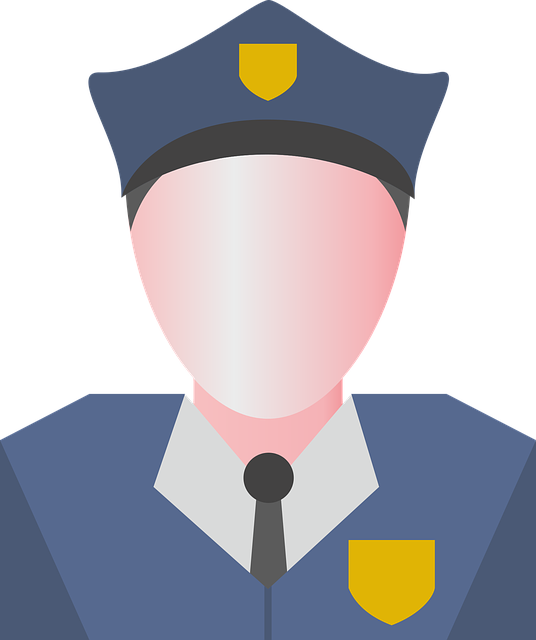Mail wire fraud, facilitated by digital communication, is a complex crime requiring meticulous investigation by legal experts. It begins with obtaining sensitive information through phishing or identity theft, followed by crafting deceptive messages to trick victims into transferring funds or sharing data. Uncovering and prosecuting this fraud involves investigating digital footprints, reconstructing communication patterns, understanding applicable laws, and presenting compelling evidence in court. A successful prosecution delivers justice and acts as a deterrent for potential white-collar criminals. The legal framework, including federal statutes, safeguards individuals and businesses from financial harm. Law enforcement and financial institutions collaborate to combat fraud through enhanced security measures, surveillance, and intelligence sharing. Individual caution and collective action are crucial in breaking the cycle of economic crimes, ensuring fair trials, and protecting business interests.
“Mail wire fraud, a sophisticated and evolving digital scam, poses significant risks to individuals and institutions alike. This comprehensive guide delves into the intricate world of this criminal activity, offering a step-by-step understanding from conception to conviction. From common tactics like phishing and impersonation to the legal frameworks in place, we explore strategies for prevention and protection. Learn how law enforcement and financial institutions play pivotal roles, and equip yourself with essential tips to avoid and report these insidious scams.”
- Understanding Mail Wire Fraud: A Comprehensive Overview
- Common Methods and Schemes Used in Mail Wire Fraud Cases
- The Legal Framework: Defining and Punishing Mail Wire Fraud
- The Role of Law Enforcement and Financial Institutions in Prevention
- Protecting Yourself: Tips for Avoiding and Reporting Mail Wire Scams
Understanding Mail Wire Fraud: A Comprehensive Overview
Mail wire fraud is a sophisticated crime that has evolved with the advancement of digital communication. It involves the use of electronic wires, such as email and online banking systems, to defraud individuals or organizations. Understanding this form of fraud requires a deep dive into its intricate mechanisms. The process typically begins with a perpetrator gaining access to sensitive information, often through phishing or identity theft. They then craft convincing messages, mimicking legitimate sources, to trick victims into transferring funds or providing confidential data.
The steps in uncovering and prosecuting mail wire fraud are crucial for achieving extraordinary results in the court of law. It involves meticulous investigation, including analyzing digital footprints and reconstructing communication patterns. Once evidence is gathered, prosecutors must navigate the complex legal landscape, understanding the nuances of federal and state laws related to white-collar crimes. A successful prosecution not only ensures justice but also serves as a powerful deterrent, helping to avoid indictment for those involved in such schemes.
Common Methods and Schemes Used in Mail Wire Fraud Cases
Mail wire fraud, a sophisticated form of financial crime, involves the use of mail or electronic communications to execute deceptive schemes with the intent to steal money or property. Common methods often include phishing emails that appear to be from legitimate sources, encouraging victims to disclose sensitive information or transfer funds. Another scheme is the false check scam, where criminals send authentic-looking checks for more than the agreed amount, asking recipients to wire back the difference—a tactic designed to dupe unsuspecting individuals into sharing their bank details.
These fraudsters may also employ identity theft techniques, impersonating trusted entities to gain victims’ confidence and access their financial accounts. With the evolution of technology, online platforms have become fertile ground for white-collar crimes, making it imperative for legal professionals specializing in general criminal defense and economic crimes to stay updated on these tactics. Understanding these methods is crucial in navigating complex trials and ensuring that defendants receive a fair trial, while also avoiding indictment for those unfairly accused in such intricate cases.
The Legal Framework: Defining and Punishing Mail Wire Fraud
The legal framework surrounding mail wire fraud is designed to protect individuals and businesses from financial loss and ensure the integrity of electronic transactions. This type of fraud, which involves the use of mails, wire communications, or both to execute a scheme to defraud, is a serious criminal offense. Federal laws, such as the Mail Fraud Statute (18 U.S.C. § 1341) and the Wire Fraud Statute (18 U.S.C. § 1343), outline the steps for prosecution and punishment.
The process begins with a thorough investigation by law enforcement agencies, followed by an indictment if sufficient evidence is found. The Steps in Criminal Jury Selection Process play a crucial role here, ensuring a fair and impartial jury. If convicted, individuals face severe penalties, including fines, imprisonment, or both. Moreover, successful prosecution can lead to the complete dismissal of all charges for the accused, particularly if they present compelling winning challenging defense verdicts. This highlights the importance of a robust legal system in combating mail wire fraud and protecting the respective business interests.
The Role of Law Enforcement and Financial Institutions in Prevention
Law enforcement plays a pivotal role in preventing mail wire fraud by investigating and disrupting criminal networks involved in such schemes. They collaborate with financial institutions to enhance security measures, monitor suspicious activities, and share intelligence to identify patterns and potential vulnerabilities. By increasing surveillance and implementing stricter regulations, they make it more difficult for fraudsters to operate successfully.
Financial institutions, including banks and credit unions, are crucial partners in the fight against mail wire fraud. They employ advanced technologies and protocols to detect unusual transactions and alert authorities promptly. These institutions also conduct regular training sessions for their employees to recognize potential red flags and understand the latest tactics used by scammers. By working closely with law enforcement and adopting robust security practices, financial institutions contribute significantly to protecting their respective business and clients from becoming victims of these sophisticated crimes.
Protecting Yourself: Tips for Avoiding and Reporting Mail Wire Scams
Protecting yourself from mail wire scams is crucial in today’s digital age. Here are some essential tips to help avoid and report these fraudulent schemes. Firstly, be wary of unexpected emails or letters claiming to be from legitimate sources, especially those requesting personal or financial information. Always verify the sender’s identity by contacting the organisation directly through official channels.
If you receive a suspicious message, do not respond or click on any links. Instead, report it to the respective business and your local law enforcement agency. By being vigilant and following these simple steps, you can contribute to breaking the cycle of white-collar and economic crimes. An unprecedented track record of successful fraud prevention starts with individual caution and collective action.
Mail wire fraud remains a persistent threat in today’s digital age, but with knowledge and vigilance, individuals and institutions can significantly reduce their risks. By understanding common schemes, recognizing red flags, and adhering to best practices outlined in this article—including effective law enforcement collaboration and financial institution oversight—we can navigate the complexities of mail wire fraud more securely. Moreover, staying informed about legal frameworks and taking proactive steps to protect ourselves is crucial in mitigating potential losses and ensuring a safer financial landscape for all.






